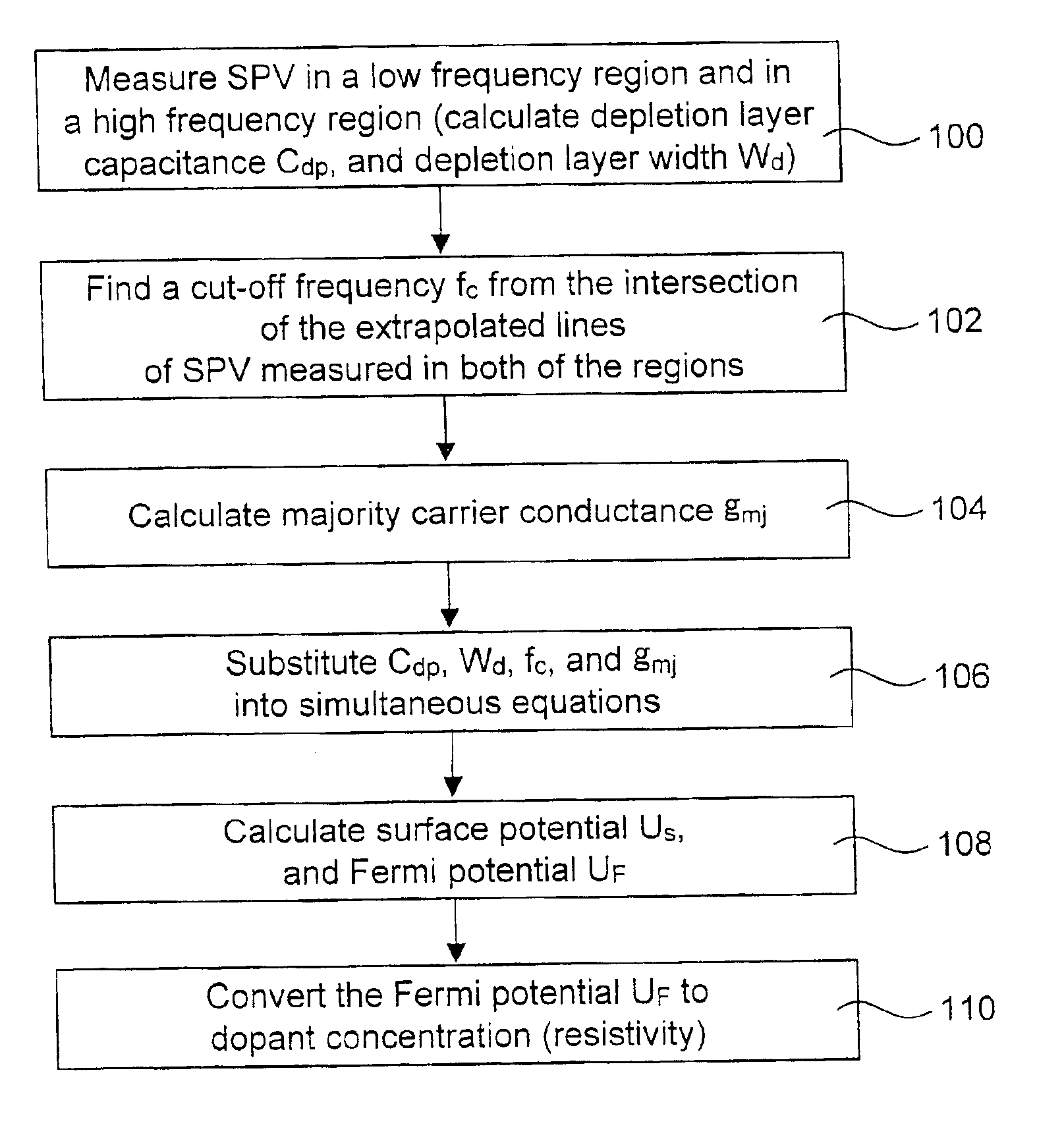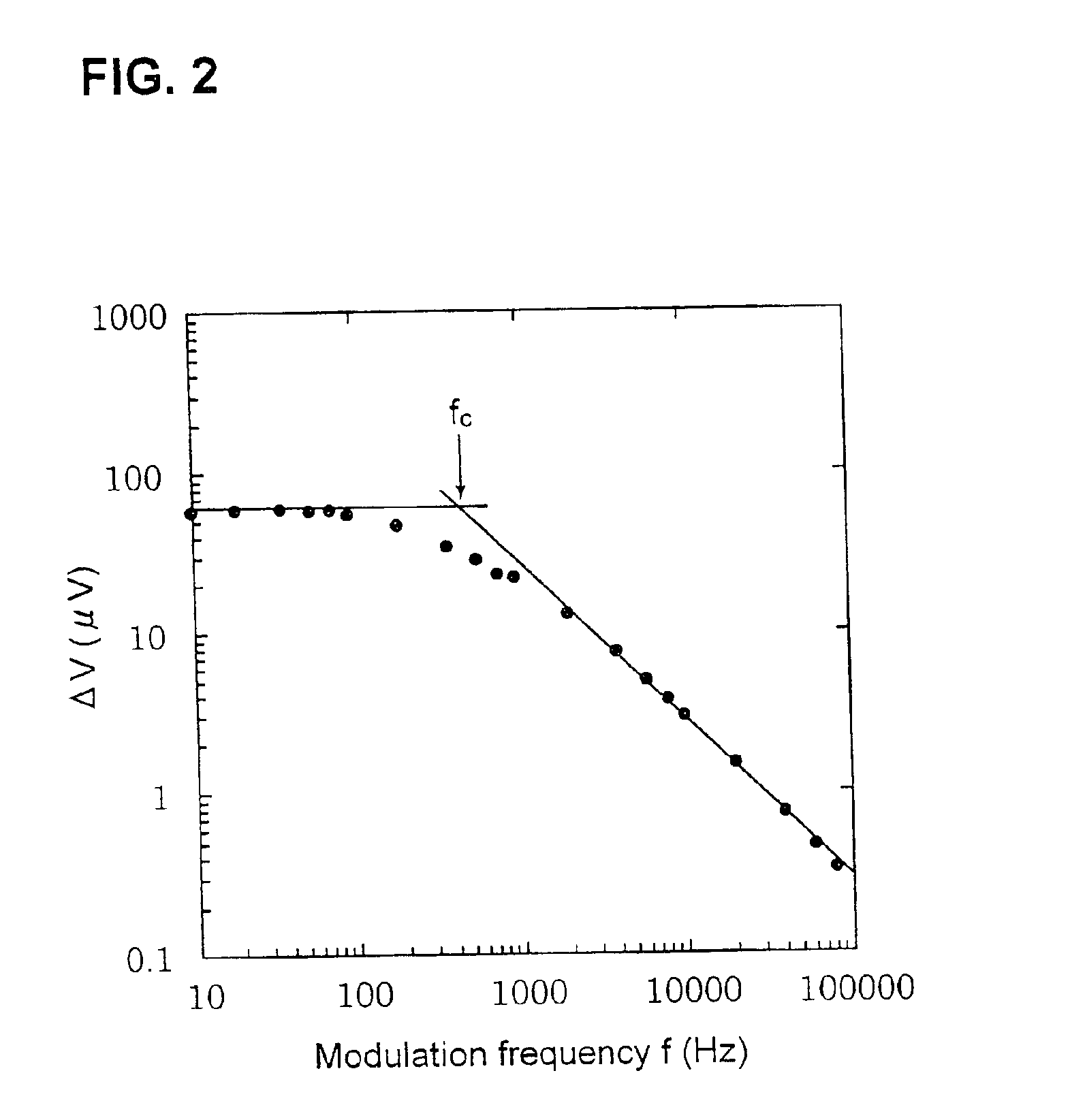Method for measuring resistivity of semiconductor wafer
a technology of resistivity and semiconductor wafers, applied in the direction of individual semiconductor device testing, semiconductor/solid-state device testing/measurement, instruments, etc., can solve the problems of increasing inspection costs, affecting the accuracy of measurement results, and changing the dopant concentration of the interface between the substrate and the epitaxial layer by heat treatmen
- Summary
- Abstract
- Description
- Claims
- Application Information
AI Technical Summary
Benefits of technology
Problems solved by technology
Method used
Image
Examples
example 1
[0058]Resistivity (dopant concentration) of an epitaxial wafer having an epitaxial layer (thickness: 3 μm) with a p-type of conductivity and unknown resistivity was measured by the measuring method of the present invention in the following manner.
[0059]First, the epitaxial wafer just after epitaxial growth was placed on an SPV measuring device and subjected to ROST and then SPV was measured in a low frequency region and a high frequency region. The frequencies of an incident light in the low frequency region and the high frequency region were 10 Hz and 50 kHz, respectively.
[0060]By drawing lines extrapolated from the SPV values measured in the respective regions, as shown in FIG. 2, the cut-off frequency fc of 3.31 kHz was obtained. Moreover, from the measured values in the high frequency region, the depletion layer capacitance Cdp of 6.19 nF was obtained and hence the depletion layer width Wd of 1.67 μm was calculated from the equation (5). Then, by substituting fc=3.31 kHz and Cdp...
PUM
 Login to View More
Login to View More Abstract
Description
Claims
Application Information
 Login to View More
Login to View More - R&D
- Intellectual Property
- Life Sciences
- Materials
- Tech Scout
- Unparalleled Data Quality
- Higher Quality Content
- 60% Fewer Hallucinations
Browse by: Latest US Patents, China's latest patents, Technical Efficacy Thesaurus, Application Domain, Technology Topic, Popular Technical Reports.
© 2025 PatSnap. All rights reserved.Legal|Privacy policy|Modern Slavery Act Transparency Statement|Sitemap|About US| Contact US: help@patsnap.com



